In October 1942, I was a sergeant in the Army Air Force located
in Santa Ana, California. Because of a ruling by General Hap
Arnold that all people with film experience were to be transferred
to Culver City to a new unit called the First Motion Picture
Unit of the Army Air Corps, I was transferred there.
When I presented my papers, the personnel officer to whom
I presented them was Lt. Ronald Reagan.
He squinted at me and he said, haven't I seen you somewhere
before? The truth was this. In 1939 I 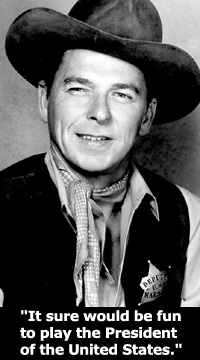 was
the youngest writer at Warner Brothers and John Huston very
politely invited me to join the writer's table in the commissary.
The only actors admitted were Humphrey Bogart because Bogey
carried on a good conversation, and Errol Flynn, because he
told us all about the high school girls he was seducing. was
the youngest writer at Warner Brothers and John Huston very
politely invited me to join the writer's table in the commissary.
The only actors admitted were Humphrey Bogart because Bogey
carried on a good conversation, and Errol Flynn, because he
told us all about the high school girls he was seducing.
Every day, Ronald Reagan would come by and look anxiously
waiting to be invited, like a child in a candy store window.
And I asked Huston, why don't you invite Reagan to join us?
He seems to be very eager.
And Huston says, come on, he's a small town boy. He goes
around quoting Reader's Digest. He's a square. He doesn't
have much to add to the conversation. Reagan is a nice boy
but he should be back in high school.
That was 1939. So here I am in '42. I told Reagan, yes, you
may have seen me around the lot. I didn't tell him the real
truth.
I was one of the first writers there and he explained that
I was going to write films, meanwhile there will be odd jobs.
And the first odd job was to be in a film with him. They were
making a training film in which a flyer is shot down and was
burned near to death and he's wrapped up like a mummy. And
I play the part of the mummy. So there I was in a hospital
bed with only my eyes showing and then Reagan comes in in
a pilot's uniform and says, how are you doing, soldier? And
I mumbled something. And the director says fine, that's a
take.
And Reagan says to me, see, Malvin, now you can put in your
resumé that you co-starred with Ronald Reagan.
Anyway, I was stationed with him from 1942 to 1945. During
that time, two things brought us together. I was writing a
play about Theodore Roosevelt with a man named Walter Doniger.
I would frequently tell Reagan about this. He was very much
interested in my knowledge of American history. Later on when
the war was over, Eleanor Roosevelt asked Ronnie to organize
the Hollywood chapter of the American Veteran's Committee.
This was to be a veteran's organization unlike the American
Legion, which was run by the old guys, this would be for the
young veterans. Ronnie was going to be chairman and he wanted
me to be his right hand man because he felt I knew history.
And so in the summer of '46 we were having meetings and then
one day I came  to
him and said, look, Ronnie, I can't go to meetings anymore.
Paramount Pictures has optioned my Teddy Roosevelt play and
they're going to put it on at a theater in Westwood and I
have to go to rehearsals. to
him and said, look, Ronnie, I can't go to meetings anymore.
Paramount Pictures has optioned my Teddy Roosevelt play and
they're going to put it on at a theater in Westwood and I
have to go to rehearsals.
And Reagan said, who's playing the part of Teddy Roosevelt?
I said, Albert Dekker. He's short, squat and has a mustache.
Reagan said, if they make it as a movie, is there any chance
of me playing the president?
I said, come on now, Ronnie, you're too good looking. You're
35, you look like a movie star, you don't look like a president!
He said, I could age.
I said, I don't think you're right for the part.
He said, gosh, it would be fun playing the part of the President
of the United States.
I was in the army for six months and I was transferred in
October 1942 to the old Hal Roach studios, which was now converted
into an Army installation.
Another thing I had with Reagan I was working on a
highly secret project in Florida and a general read my script
aloud to me and he said, this is exactly how I want the script
done. How can we guarantee it? I said, write on the script
with your signature that I am to be the director of the narration.
Two months later, the film is finished and I go on the sound
stage and Reagan says, what are you doing here? I said, Lieutenant,
I am here to direct you in the narration.
And he said, look son, I been around the block a few times.
I was a radio sportscaster, for God's sakes and a movie star.
You're going to tell me how to speak the English language?
I said, no. I'm not telling you, the general is. If you don't
like it you can go over his head to the Pentagon.
And he said, come on now, let's not have Washington interfere
there's enough government interference. Let's compromise.
We'll do it your way and my way and Robert Carson, head of
production, will decide.
So the point is, the art of compromise stood him in good
stead when he entered the political field.
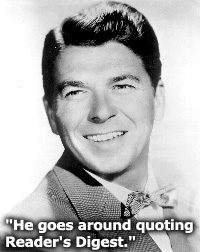 Very
friendly, nice guy. In 1989 after he left the White House,
a group of us decided to have a reunion. We formed a committee
and we were told, you'll have to meet with a representative
of the president. We thought it was Secret Service. We put
on our ties and jackets, it turned out to be a very pretty
girl. She was Nancy's social secretary. And she said, you
must understand that President Reagan just had an operation
on his brain and he can't go out much. Therefore your affair
has to end at 6:30 so he can go home and get to bed early.
So we agreed to that. But at the last minute we got Bob Hope
to appear. Very
friendly, nice guy. In 1989 after he left the White House,
a group of us decided to have a reunion. We formed a committee
and we were told, you'll have to meet with a representative
of the president. We thought it was Secret Service. We put
on our ties and jackets, it turned out to be a very pretty
girl. She was Nancy's social secretary. And she said, you
must understand that President Reagan just had an operation
on his brain and he can't go out much. Therefore your affair
has to end at 6:30 so he can go home and get to bed early.
So we agreed to that. But at the last minute we got Bob Hope
to appear.
Have you ever heard of Bill Orr? He's an actor who is also
Jack Warner's son-in-law. So I said to Bill, let's outfox
Nancy and get Ronnie to stay later.
Bill got up and said, Mr. President, you never won an Academy
Award but you should have. We have here a new book of the
history of the Academy Awards. Will you come to dais and accept
it?
And Reagan said, is there any press here? There were four
Secret Servicemen watching him. He was told there's no press
and he said oh, hell and he went up there and he started
to tell not dirty jokes but sort of raunchy
jokes. And he had the time of his life. He stayed there for
another hour. And when he left, Nancy gave us a dirty look.
The next day we got a phone call from Reagan's secretary
saying, the President had the time of his life will
you guys please invite him again? He was back being that little
boy wanting to join the writers' table.
The joke he told us during the war, Norman Krasna,
one of our director-writers, was sent to France and he noticed
at the end of an airfield there was a cross. So he figured
this must be a very holy, dedicated place. So he had it photographed
in the evening, in the  morning,
in the sun, in the rain. And then finally he went over to
the commanding officer of the field and he said, that cross
you have there, it must have great significance. And the commanding
officer says, yes indeed, it indicates the latrine. morning,
in the sun, in the rain. And then finally he went over to
the commanding officer of the field and he said, that cross
you have there, it must have great significance. And the commanding
officer says, yes indeed, it indicates the latrine.
He told those kind of jokes and enjoyed himself. They weren't
dirty, but you don't expect to hear it from a President of
the United States. That was '89. Four years later in '92,
we had another reunion but he couldn't come because he promised
George Bush Sr. that he would campaign with him against Clinton.
That's not the last time I saw him. A few years later, a
contingent of Russians came to this country and they were
going to visit the president at his office in Century City,
so I met some Americans going with them and I said, I don't
have a clearance, but can I go along?
We went to this Century City building. And the elevator was
patrolled. The president was on the 30th floor. Nobody 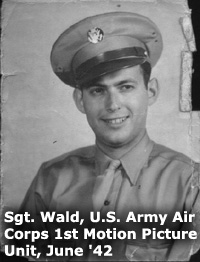 could
stop at that floor unless there was a secret serviceman operating
it. I got inside, went to the president's outer office and
everyone was wearing name tags. I didn't have one. I figured
I was in trouble, I'd be thrown out. So I went over to the
secretary and said, I'm an old comrade of the president's,
and she gave me a tag. could
stop at that floor unless there was a secret serviceman operating
it. I got inside, went to the president's outer office and
everyone was wearing name tags. I didn't have one. I figured
I was in trouble, I'd be thrown out. So I went over to the
secretary and said, I'm an old comrade of the president's,
and she gave me a tag.
Then the president came out. It was interesting. Some of
the Russians said, Mr. President, during the war I was a paratrooper,
I dropped behind enemy lines. The war was a very great danger
for me.
Reagan said, oh, I had an adventure also. I was in Air Force
intelligence. Which he wasn't. He was just making films. But
he felt he had to match these great Russian war heroes.
Another time I saw him, not up close. They were going to
dedicate the Reagan library. There were going top be five
Presidents there: Nixon, Reagan, Ford, Carter and Bush. The
only people who were admitted were people from the Republican
party who had given $5,000. I hadn't done that. A friend of
mine was one of those rich donors. He gave me the name of
Reagan's secretary so I sent him a letter care of her.
I said, Dear Mr. President, when Truman was President and
had any affair, he always invited guys from the artillery.
I know there's a lot of people served with you, but how about
inviting me as a representative of your comrades?
Next day I got a personal letter from the President inviting
me to come to 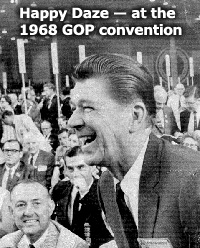 the
opening of the library. So when I got there, you can imagine
the security with five presidents there. We were put in bleachers
and told not to move there was a Secret Service man
at every area. The five presidents were in the library. There
were 300 members of the press. I wanted to see what was going
on. the
opening of the library. So when I got there, you can imagine
the security with five presidents there. We were put in bleachers
and told not to move there was a Secret Service man
at every area. The five presidents were in the library. There
were 300 members of the press. I wanted to see what was going
on.
I saw Hal Fishman of Channel 5. I went over to the secret
serviceman and said, I'm a friend of Mr. Fishman's. He said,
OK. I went down to Hal Fishman I didn't know him. I
said, what's going on? He says, here's what I'm stuck with.
We have the great historical figures nearby and I'm interviewing
Sonny Bono.
Sonny comes by and quotes some clichs and moves on.
I go back to my seat and all these Republican people asked
me, what's going on? I said, they just interviewed the next
President of the United States Sonny Bono.
They said, you're kidding. I said, no. Sonny is in show business,
just like Ronnie. He's on his way up, he's mayor of Palm Springs.
You lovely Republicans, you can look forward to Cher being
the First Lady, doesn't that thrill you? But Sonny was elected
to Congress. Now his widow is there I had a point.
Right now a captain from the Air Force is coming to interview
me about Reagan for a book about our unit. Then the Reagan
Library has invited a group of us October 31st, a reunion
committee,  they
want to get us on film with memories of Reagan. And then Warner
Brothers is giving us $10,000 to have a reunion, October 30th
in the executive dining room. I have a feeling all this activity
is because when Reagan dies, there will be a national day
of mourning. We were in the Army together 60 years ago. I
guess before we pass on they want to get all of us on film
talking about Reagan. they
want to get us on film with memories of Reagan. And then Warner
Brothers is giving us $10,000 to have a reunion, October 30th
in the executive dining room. I have a feeling all this activity
is because when Reagan dies, there will be a national day
of mourning. We were in the Army together 60 years ago. I
guess before we pass on they want to get all of us on film
talking about Reagan.
There's a man who's going to be at the Hollywood Entertainment
Museum named Lawrence Suid. He is talking about a secret thing
during the war. He's a historian who has a new book out called
"Guts and Glory." And he claims that Eisenhower
in 1943 asked the Hollywood studios not to make any atrocity
stories. And then two years Eisenhower explained that the
studios were not to speak unkindly about the Germans because
they were no longer our enemies, they are our allies in our
coming war against Russia.
Apparently, Harry Cohn, Jack Warner, Sol Lesser and seven
other people were brought to the concentration camps by Eisenhower,
and he said, gentlemen, 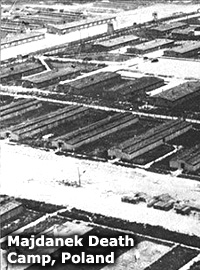 you're
the most important people in America. You tell people how
to think. And we don't want stories about the atrocities because
we want Germany to be our allies. A gentleman's agreement
not to bring up the Holocaust. In WWII there's not been a
single major film about the Holocaust. And that's at Eisenhower's
request. you're
the most important people in America. You tell people how
to think. And we don't want stories about the atrocities because
we want Germany to be our allies. A gentleman's agreement
not to bring up the Holocaust. In WWII there's not been a
single major film about the Holocaust. And that's at Eisenhower's
request.
The only one who is really doing something is Spielberg,
has probably spent a million dollars. He's given people $50,000
each to go interview the survivors. "Shoah."
All this activity from Washington, all this haste.
Jack Warner was a colonel and Ronnie was a star. They had
three people out photographing them atWarner Brothers. Here's
a flag pole and at the base of the flag pole now there's a
plaque honoring those of us who had worked for Warner Brothers
then went into this film unit. After all this silence, suddenly
all this activity is going on.
I may have told you why I think Reagan had Alzheimer's while
he was president. During his presidency they took him on a
tour of the concentration camps. He said to the press and
his staff, "I know I 've been here before." What
I knew is he never left Culver City. But Ronnie then recited
shot by shot what he had seen on film. He was in a state of
shock and he never recovered. Can you imagine how embarrassed
how the press was and his staff? They couldn't tell the public,
listen, your sitting president is hallucinating.
What happened was as the war drew to a close, General
Hap Arnold, head of the Army Air Force wanted the American
people to have a record of the liberation of the concentration
camps. So he sent his chief officer, Owen Crump, with a camera
crew to all the concentration camps as they liberated and
he photographed them.
General Arnold wanted it in color. Because it was color,
the film could 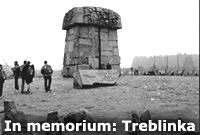 only
be processed at the Technicolor labs in North Hollywood. When
it was finished it was sent over the hill to our post. There
was a Colonel Jones from West Point, our new commander, but
Reagan was now his executive officer. only
be processed at the Technicolor labs in North Hollywood. When
it was finished it was sent over the hill to our post. There
was a Colonel Jones from West Point, our new commander, but
Reagan was now his executive officer.
So he said, Captain Reagan, do you realize that we are going
to be the first ones in the history of the West to see the
concentration camps? Don't you think we should share it with
someone else?
Reagan said, all right, just those people on this post cleared
by the FBI for secret work.
I was one of a dozen of those people. So we go to see these
films. You see these corpses walking, defecating as they walk.
You see bodies being put in wheelbarrows by the natives and
thrown in a ditch. You see the lampshades made by the Nazi
commandant's wife out of human skin she loved to display
the nipples, she loved the tattoos on their wrists.
When it was over, even though it was summertime, Reagan said
nothing. He was chilled.
We went outside and I said, look, Ronnie, let me tell you
a story because you like to hear stories. In 1849 there was
a young Pole named Josef Danglowitz. He was afraid of wars
and pogroms and revolutions, so he left Poland, came to America,
was an itinerant peddler in the South, went north to Brooklyn,
NY, became a very successful hat shop owner. He had 10 children,
one of whom was my mother.
I said, if my grandfather hadn't left Krakow, Poland, I would
have been one of those corpses you just saw on the screen.
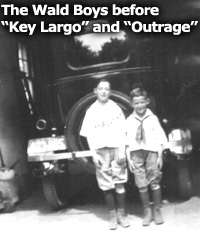 He
just shuddered. And then later on he got a copy of that film
and his son Michael and his son Ron Jr. said when they reached
14 or 15, their father said, boys, you must see this. He
just shuddered. And then later on he got a copy of that film
and his son Michael and his son Ron Jr. said when they reached
14 or 15, their father said, boys, you must see this.
Many years later when he was President he was taken on a
tour of the concentration camps. As he saw them, he said to
the press and his staff, I've been here before.
And he then proceeded to describe in great detail everything
we had seen on the film.
He couldn't separate fact from fantasy. The film that he
saw became reality. He looked at them, his staff and the press
in awe. He said, I've been here. He had never left Culver
City during the war.
His staff didn't realize that he was traumatized. The stuff
was so shocking especially that we were the first persons
in the West to see this. No one had ever seen this film before.
And so he went into a state of shock when he saw it. And subconsciously,
when they took him to the camp, the film started to unreel.
He spoke like a narrator describing what he had seen. But
he didn't say, I saw it in a projection room with Wald and
Jones. He said, I was actually in this spot.
When I saw it on the news, I said, poor guy, he's lost it.
Two people told me they interviewed him when he was President
and they had the feeling he had early Alzheimer's. One was
a woman named Ann Sperber. She was doing a book on Bogey and
she went to interview Reagan.
She said, Mr. President, do you remember when you and Bogey
worked together? He said, we used to play golf all the time.
He couldn't remember the fact that in 1939, he was in a film
called "Dark Victory" with Bette Davis and Bogart.
And he kept being very evasive.
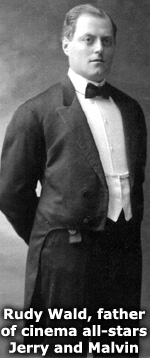 Later
Edmund Morris, doing the official biography, said that when
he asked him about the war year from '42 to '46, he was very
evasive. He said, did I ever tell you about the time when
John Wayne and I played golf? He just couldn't remember but
he had to ad lib to cover up this is while he was President. Later
Edmund Morris, doing the official biography, said that when
he asked him about the war year from '42 to '46, he was very
evasive. He said, did I ever tell you about the time when
John Wayne and I played golf? He just couldn't remember but
he had to ad lib to cover up this is while he was President.
We were friends from '42 to '46. He went onto be governor
of California. I never saw him then. After the Presidency
I saw him in '89, then when the Russians came I saw him again.
ROD STEIGER AS AL CAPONE
Malvin: Right after "Al
Capone," Allied Artists hired me to write a script about
the life of Einstein. Steiger wanted to do it. In my research
I located Einstein's son Hans Albert, a professor at Berkeley.
He came down, we went to the Luau for lunch. All the women
came over to Steiger for his autograph. He laughed and said,
if they knew this was Einstein's son, they'd be asking him.
Unfortunately when my screenplay was finished, the head of
Allied Artists said, we don't think a boy is going to say
to a girl, let's go to the Bijou to see "The Life of
Einstein." He didn't think that was commercial. So Steiger
was very disappointed.
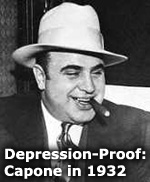 Steiger
was furious about one thing. Playboy had interviewed people
and asked what's the best film Rod Steiger made? And they
said, "Al Capone." And he was furious. He said,
no it was "The Pawnbroker"! Steiger
was furious about one thing. Playboy had interviewed people
and asked what's the best film Rod Steiger made? And they
said, "Al Capone." And he was furious. He said,
no it was "The Pawnbroker"!
In 1958 I wrote a show for CBS Climax called "Albert
Anastasia's Life & Death." We were hoping Rod Steiger
would do it. But through his agent he said he would never
do a cheap gangster film, that's beneath him.
We said all right. Eli Wallach did a marvelous job and we
got the highest rating of the year. Albert Anastasia was the
head of Murder Inc. They were people who kill people on contract.
Two young guys, producers at Allied Artists, wanted to a
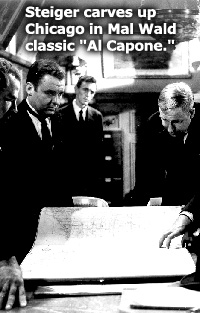 film
about Al Capone. They had a script which was thrown out. They
saw my show with Eli Wallach and they sent for me and pitched
me to do Al Capone. I said, yes. Al Capone was from Brooklyn,
a crummy area. I was raised in a similar area, in fact the
area I was raised in had a higher crime rate. I know how those
people talk because many of my friends ended up getting arrested. film
about Al Capone. They had a script which was thrown out. They
saw my show with Eli Wallach and they sent for me and pitched
me to do Al Capone. I said, yes. Al Capone was from Brooklyn,
a crummy area. I was raised in a similar area, in fact the
area I was raised in had a higher crime rate. I know how those
people talk because many of my friends ended up getting arrested.
They said, who would you like? I said, we tried to get Rod
Steiger. They contacted Steiger and he said he didn't want
to do it. So they went to Lew Wasserman, who was perhaps the
smartest man in Hollywood. He owned MCA Inc. Lew called Rod
in his office, and said look, Rod. I am interested in your
career. You've done great films, like "On The Waterfront."
But the last three or four films you've done have been bums,
and you picked them yourself.
Lew said, I have read the script and I think it's great for
you. I guarantee you if you want to do the part, they want
you so much you'll get ten percent of the gross.
So Steiger mumbled. But he did it. But it was very successful
and he made a lot of money out of it.
A few weeks before he died, a producer for AMC named Danny
Anker wanted to do a film about Hollywood & The Holocaust.
 He
came to see me and I suggested he go out to see Steiger. He
went out to see Steiger's house and said, remember Malvin
Wald? Steiger said certainly. He pointed to a wall poster
and said, there I am and there's Malvin's name. They filmed
him and two weeks later he died. That will be on the air on
AMC. He
came to see me and I suggested he go out to see Steiger. He
went out to see Steiger's house and said, remember Malvin
Wald? Steiger said certainly. He pointed to a wall poster
and said, there I am and there's Malvin's name. They filmed
him and two weeks later he died. That will be on the air on
AMC.
Remember the "The Long Good Friday" with Bob Hoskins?
All the critics said, that was an imitation of "Al Capone,"
or a tribute. "The Untouchables" movie, Robert DeNiro
was playing the part of Al Capone. He got a copy of our film.
Whether he knew it or not, he subconsciously stole some of
the dialogue. He probably told them, I'm just improvising
something. He got wonderful reviews for it.
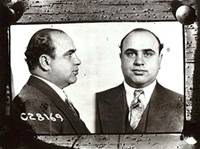 The
truth about Eliot Ness was that he accomplished very little.
He raided a few warehouses with liquor but he didn't overthrow
Capone. Capone was overthrown by the fact that President Herbert
Hoover was in Florida. He went to a hotel and people applauded
him. The
truth about Eliot Ness was that he accomplished very little.
He raided a few warehouses with liquor but he didn't overthrow
Capone. Capone was overthrown by the fact that President Herbert
Hoover was in Florida. He went to a hotel and people applauded
him.
He said to his staff, see I really am popular. And they said,
no Mr. President, it's the man behind you Al Capone.
A gentleman who killed two hundred people. The head gangster
of America.
The President said, why isn't he in prison?
The staff said, Mr. President, murder is a local crime. It's
not prosecuted by the United States government, but by the
Chicago police force. Al Capone OWNS the Chicago Police Force.
He OWNS the Governor of Illinois. There's nothing we can do.
 Then
in his cabinet meeting, the President says, this is a disgrace.
This gangster is walking around free and he's killed innocent
people. What can we do about it? Then
in his cabinet meeting, the President says, this is a disgrace.
This gangster is walking around free and he's killed innocent
people. What can we do about it?
The Secretary of the Treasury said, Mr. President, in 1912
a law was passed, a very obscure law that no one has ever
prosecuted. It's called "Income Tax Evasion." We
looked up Capone's income tax returns. Since 1926 he's made
$100 million but he only reported $50,000. So we'd like to
take this obscure law and try to get him on income tax evasion.
So they sent four accountants to Chicago and they dug up
this information and he ended up getting 13 years in prison.
When Capone got to prison in Atlanta first, there were many
people inside whose brothers or cousins were killed by Capone,
and they tried to kill him. So the governor said, we better
protect him. They took him to Alcatraz where he'd be safe.
While he was in Alcatraz he developed syphilis so they let
him out. He went to Florida and lived on an island and died.
Steiger was fascinated by the character. Once he got into
it, he 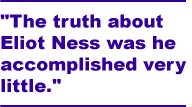 moved
into the studio a month in advance. He had a very fine man
named Joe Sargent, now a top director, as a dialogue coach.
Every day he would come to me and say, what about this line?
What do you mean about this? He would question every line. moved
into the studio a month in advance. He had a very fine man
named Joe Sargent, now a top director, as a dialogue coach.
Every day he would come to me and say, what about this line?
What do you mean about this? He would question every line.
The director, Dick Wilson, said to Rod, look, you've got
all your friends to be in this thing. You'd think they'd be
willing to ignore the SAG rules and have two weeks rehearsal
like a stage play. And he said, sure, they'll do it. So we
rehearsed like a Broadway play, improvised, rewrote many lines
of the script. So when they went to work on the sound stage,
they had it down pat. They were able to do the thing for $500,000,
the picture grossed around $20 million.
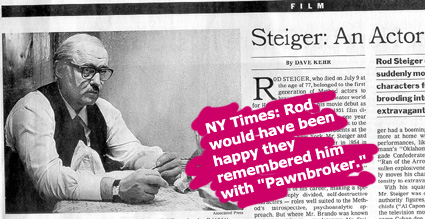
THE INSIDE TIP ON THE BLACKLIST
Malvin: In 1948 I was trying
to go to Washington to work with Drew Pearson. Drew Pearson
was the most important political columnist in America. I
said, I'd like to have lunch with you every day. He said,
I go around to cabinet ministers giving secrets, so you can't
be there. We'll meet for lunch at the Mayflower.
I was waiting there and along came J. Edgar Hoover. The two
of them talked and Pearson pointed to me and I waved to him
and pretty soon Hoover left. I sat down and Pearson said,
look this is 1948 let me tell you what's going
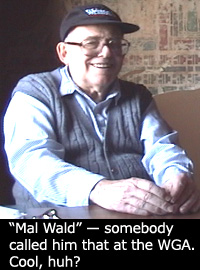 to
happen to Hollywood. There's going to be a bloodbath. When
you go back, do not sign any petitions. to
happen to Hollywood. There's going to be a bloodbath. When
you go back, do not sign any petitions.
I said, why? He said because the man who is handing out the
petitions is an FBI man. They've infiltrated the Communist
Party, all the left wing organizations. If you were to sign
a petition and they call you before Congress and you say I
didn't sign that petition, the FBI man says, wrong, I was
there.
Five-O: Did Pearson consider
you a liberal or left-winger?
Malvin: No, he was a Quaker,
a liberal. When I came back everybody was signing petitions
right and left and I wouldn't do it. Pearson said, don't tell
anybody because if it gets back to J. Edgar Hoover that I
tipped you off he wouldn't like it. So he says, I'm trusting
you.
People say, why don't you sign the petition. I said I prefer
not to. You  can't
imagine how many of my friends were blacklisted, signing these
petitions that the FBI had. Some of my friends that were blacklisted,
didn't work for years. can't
imagine how many of my friends were blacklisted, signing these
petitions that the FBI had. Some of my friends that were blacklisted,
didn't work for years.
That's how I escaped the blacklist, because I had been warned
in advance.
CHALLENGED TO WRITE BY ALFRED STIEGLITZ
Malvin: When I was in school,
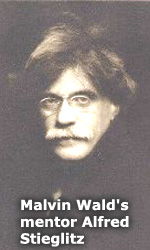 Brooklyn
College 1934, my Spanish teacher said go to an art gallery
called American Place, on Madison Avenue and write a criticism
of the works of someone named Georgia O'Keefe. While there,
I was looking at a work called "Two Blue Lines,"
which I couldn't figure out. Brooklyn
College 1934, my Spanish teacher said go to an art gallery
called American Place, on Madison Avenue and write a criticism
of the works of someone named Georgia O'Keefe. While there,
I was looking at a work called "Two Blue Lines,"
which I couldn't figure out.
There was a man I thought was the janitor, and I asked him
what it meant.
He said, well, what do you feel?
I said, nothing.
He says, you really are stupid, come 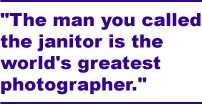 with
me. He took me to the office and showed me some beautiful
black and white photographs of Central Park in a snowstorm,
immigrants at Ellis Island. with
me. He took me to the office and showed me some beautiful
black and white photographs of Central Park in a snowstorm,
immigrants at Ellis Island.
And I said, that I can really feel emotion in. In fact the
photographer of these pictures I think is a greater artist
than Ms. O'Keefe.
I said, my name is Malvin.
He said, my name is Alfred.
And I said, for my report, can I say you're the caretaker?
He says, you might as well say that. I then go back to school
and I write my report in Spanish.
The teacher calls me after class: "You're really a wise
guy aren't you? 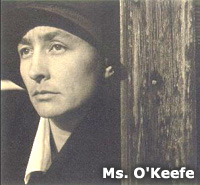 The
man you said is the janitor happens to be Alfred Stieglitz,
the Socrates of the 20th Century, the world's greatest photographer,
the man who's bringing impressionist art to America, and you
really are stupid." The
man you said is the janitor happens to be Alfred Stieglitz,
the Socrates of the 20th Century, the world's greatest photographer,
the man who's bringing impressionist art to America, and you
really are stupid."
So I said, if I'm stupid how come he invited me back for
some art lessons?
So I went back to see Alfred again and he told me about Ms.
O'Keefe, how she was a student at Columbia University. And
a friend of hers took one of her paintings and gave it to
him and he put it on exhibit, and she came and said, how dare
you do that? And he said, just shut up. You're a great talent.
And then later he divorced his wife and married Ms. O'Keefe.
He was about 20 years older.
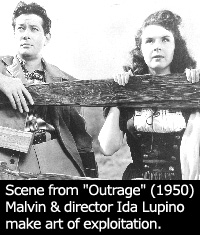 And
then he told me how the Rockefellers would send their art
buyers down. He threw them out. He said let the Rockefellers
come down themselves. I'm not helping interior decorators. And
then he told me how the Rockefellers would send their art
buyers down. He threw them out. He said let the Rockefellers
come down themselves. I'm not helping interior decorators.
Then he suddenly remembered and asked me, why are you writing
a report in Spanish?
And I said I'm majoring in Spanish and I want to be a Spanish
teacher.
He said, why?
I said, this is 1934. There's a Depression on, I want security.
He said, you want to spend the rest of your life locked up
in a classroom with a bunch of teenagers saying "e"
changes to "i" in the subjunctive? What a waste
of a life! Have you thought of the arts?
I said, well, I have no talent. I tried photography. 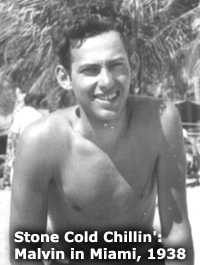 I
tried painting. I'm not very good. I
tried painting. I'm not very good.
He said, have you had any remote success?
I said, I happened to write some jokes which I sent in to
Walter Winchell and Mark Hellinger, and they printed it.
He said, why don't you pursue writing and try and see what
happens?
CRIME SCHOOL & THE NAKED CITY
Malvin: When I went to do
"Naked City" I recalled the photography of Stieglitz
and I told Mark Hellinger that. This was 1946. But oddly enough,
Mr. Hellinger knew very little about Stieglitz. It's amazing.
People in Hollywood are uneducated. He knew nothing about
documentaries. He'd never seen one in his life.
Later a friend of mine named Ruth Orkin showed me a book
of photographs called "Weegee's Naked City." The
man's name was Arthur Fellig. He was a news photographer.
He used to sit in his car all night with a police radio. As
soon as he heard there was a murder he'd get there first,
photograph the corpse before the cops arrived. And the cops
said, Hey, Arthur, you got some kind of Ouija board there?
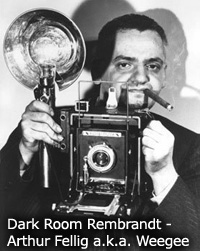 He
put these photographs in a book called "Weegee's Naked
City." No one ever heard of it but my friend Ruth Orkin,
who went on to become a very famous filmmaker, her best friend
was Stanley Kubrick. She said, Stanley and I just think his
stuff is great. Why don't you get the book? He
put these photographs in a book called "Weegee's Naked
City." No one ever heard of it but my friend Ruth Orkin,
who went on to become a very famous filmmaker, her best friend
was Stanley Kubrick. She said, Stanley and I just think his
stuff is great. Why don't you get the book?
I got the book and I called Mr. Hellinger in New York and
I said, I want you to buy the book for the title alone. He
says, why? I said, the words "Naked City," it's
so poetic!
So he bought the book, that was the title, and when I came
back to New York having done all my research, I had a whole
book full of stories. He said, do you have a story for me?
I said, frankly speaking there's probably around 8 million
stories in the Naked City. He said don't give me the 8 million,
give me one! So I gave him one story, which we developed into
a film.
Hellinger was thrilled because this was a case where a woman
was drowned in a bathtub. He said, Oh my god. Winchell and
I were driving around and we heard about it. We came and we
saw the corpse. He said I know all about the case. But it
never was solved.
I said, I solved it.
He said, what did you solve it?
I saw the secret files, the police were paid off.
What do you mean?
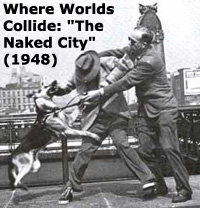 I
said, this model was being kept by a man named Stoatsbury
of Philadelphia. They found his pajamas there and other evidence.
Not that he was involved in the murder but that he was keeping
her. And therefore it's obvious that Stoatsbury bribed the
police to bury the case for the sake of his reputation and
that was the end of the investigation. That's why it's an
unsolved crime. I
said, this model was being kept by a man named Stoatsbury
of Philadelphia. They found his pajamas there and other evidence.
Not that he was involved in the murder but that he was keeping
her. And therefore it's obvious that Stoatsbury bribed the
police to bury the case for the sake of his reputation and
that was the end of the investigation. That's why it's an
unsolved crime.
Hellinger was thrilled.
The point is, we never would have made the picture if we'd
shown the corruption like in "Serpico," we wouldn't
have had the picture made. First of all, I wouldn't have had
a chance to do all this research. The New York Police opened
their files to me. Unsolved cases.
What happened was this. I heard about the police academy
and I wanted to go. The Deputy Chief of police said, come
on now, civilians are not allowed at the Police Academy. It's
a street in Brooklyn and I can't even find it. A street called
Cranberry Place.
 I
said I know exactly where it is, next to Raspberry Place,
Peach Place and so on. I
said I know exactly where it is, next to Raspberry Place,
Peach Place and so on.
He said you're really pulling my leg.
So I said, Chief, let's send for a map of Brooklyn. Sure
enough there were four tiny little streets about 100 yards
long named for the names of fruit.
He said how did you know that?
I said, I happen to know more than you do about the city,
and you're the Deputy Chief of Police.
He said, all right you can go down to the school. So I took
the classes in homicide, ingerprinting. What's interesting,
there were many young detectives there my age. They had never
seen a murder because murder only takes place in the city.
If someone's out in Queens or quiet parts of Brooklyn, they
had never seen a corpse in their life.
So the instructor says to the students, all right you're
on the scene of the 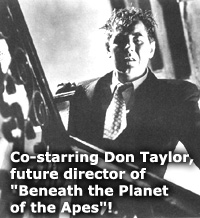 crime,
you see a gun, what do you do with it? It's a murder weapon.
One guy raises his hand, says, I put it in my pocket, take
it back to the lab. Wrong! What you've done is smear all the
fingerprints. crime,
you see a gun, what do you do with it? It's a murder weapon.
One guy raises his hand, says, I put it in my pocket, take
it back to the lab. Wrong! What you've done is smear all the
fingerprints.
Someone else said, what you do is, you take a pencil and
put it in the barrel of the revolver, right?
Instructor says, I'm glad you asked that. Because you put
a pencil in, you destroyed all the ballistics markings.
I said, how do you do it?
He said, what you do is you take two wooden boards, and you
put the revolver between like a sandwich and you nail it down,
and you hand that weapon without any fingerprints or smudges
to the police lab.
So I said, where do you get the hammer and board and nails?
He said, in your homicide kit what kind of a detective
are you? right in the back of your car!
I never told him I wasn't a detective.
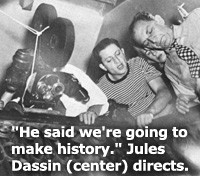 When
I came back I wrote an article for the Writer's Guild magazine
called "Cops 'n' Writers" about all the things I
learned. And the studios started calling me and they said
you know more than our research department. So I had to advise
studios on correct police procedure. When
I came back I wrote an article for the Writer's Guild magazine
called "Cops 'n' Writers" about all the things I
learned. And the studios started calling me and they said
you know more than our research department. So I had to advise
studios on correct police procedure.
When the film was finished, Hellinger said, you know, I like
the film so much I'm going to personally narrate it. And you
know how it ends? I said, how? He said, you know the expression
there are 8 million stories in the Naked City. I'm gonna say,
"There are 8 million stories in the Naked City and this
has been one of them." How do you like that? I said,
it's great. And now that's part of our lexicon.
Like Frasier said on TV the other night: "There are
8 million naked bodies in the naked city and I haven't seen
one of them."
So that picture really started two things. The semi-documentary
feature and the police genre.
When I went to England I discovered that "Naked City"
had tied with Olivier's "Hamlet" and "The Bicycle
Thief" as the best film of the year (1948) anywhere.
This was 1952. When I was in London, I ended up working with
the head of Scotland Yard, a man named Fabian of the Yard.
Because he loved the 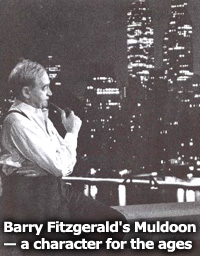 movie.
I actually was the head writer and technical adviser on a
series about Scotland Yard. movie.
I actually was the head writer and technical adviser on a
series about Scotland Yard.
You remember when the sheep was cloned? In the L.A Times
they said there are two original sheep. Crime films. "Naked
City," from that came Hill Street Blues. They all were
clones of that. In the comedy field, "I Love Lucy."
"Naked City" and "I Love Lucy" were the
two original series in television and everybody just copied
them and did variations.
Five-O: Were you close with
"Naked City" director Jules Dassin?
Malvin: I belonged to something
called the Actors' Lab, he was one of the directors there.
One of his actors was a fellow named Howard Duff, who was
doing Sam Spade on radio. In answer to your question, I wasn't
close to him, but Hellinger was afraid of my screenplay, he
said it's so revolutionary, so different, I'm afraid to do
it. Then I asked him if he would give it to Jules Dassin.
Dassin says, this is great, we're going to make history. I
was very grateful to him.
Dassin started out doing shorts at MGM. Then I think he went
over to Hellinger, he did "Brute Force." It was
revolutionary, they had to change it because it portrays the
Warden character played by Hume Cronyn as a homosexual.
By the way, Hemingway hated all films from his books except
"The Killers." So he partnered with Mark Hellinger.
I was set to write and get sole credit on "The Snows
Of Kilamanjaro." My deal with Hellinger for the Hemingway
credit was to make up for the misappropriation of the screenplay
credit for "Naked City," which should have been:
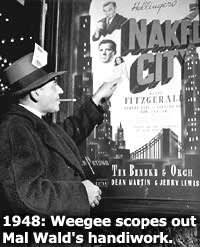 Screenplay
by: Screenplay
by:
Malvin Wald
Additional dialogue:
Albert Maltz
Instead it was released in the reverse order. Hellinger said,
Maltz is a big name, critics love him. If you appealed the
credit with the Writers' Guild you'd win, but I'm keeping
it. I'll make it up to you on the Hemingway project.
But Hellinger died after a preview of "Naked City."
"Naked City" was Hellinger's last picture. 
|






























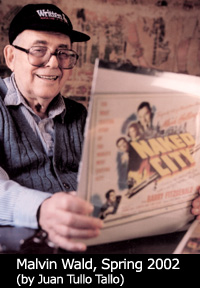
 was
the youngest writer at Warner Brothers and John Huston very
politely invited me to join the writer's table in the commissary.
The only actors admitted were Humphrey Bogart because Bogey
carried on a good conversation, and Errol Flynn, because he
told us all about the high school girls he was seducing.
was
the youngest writer at Warner Brothers and John Huston very
politely invited me to join the writer's table in the commissary.
The only actors admitted were Humphrey Bogart because Bogey
carried on a good conversation, and Errol Flynn, because he
told us all about the high school girls he was seducing.  to
him and said, look, Ronnie, I can't go to meetings anymore.
Paramount Pictures has optioned my Teddy Roosevelt play and
they're going to put it on at a theater in Westwood and I
have to go to rehearsals.
to
him and said, look, Ronnie, I can't go to meetings anymore.
Paramount Pictures has optioned my Teddy Roosevelt play and
they're going to put it on at a theater in Westwood and I
have to go to rehearsals.  Very
friendly, nice guy. In 1989 after he left the White House,
a group of us decided to have a reunion. We formed a committee
and we were told, you'll have to meet with a representative
of the president. We thought it was Secret Service. We put
on our ties and jackets, it turned out to be a very pretty
girl. She was Nancy's social secretary. And she said, you
must understand that President Reagan just had an operation
on his brain and he can't go out much. Therefore your affair
has to end at 6:30 so he can go home and get to bed early.
So we agreed to that. But at the last minute we got Bob Hope
to appear.
Very
friendly, nice guy. In 1989 after he left the White House,
a group of us decided to have a reunion. We formed a committee
and we were told, you'll have to meet with a representative
of the president. We thought it was Secret Service. We put
on our ties and jackets, it turned out to be a very pretty
girl. She was Nancy's social secretary. And she said, you
must understand that President Reagan just had an operation
on his brain and he can't go out much. Therefore your affair
has to end at 6:30 so he can go home and get to bed early.
So we agreed to that. But at the last minute we got Bob Hope
to appear.  morning,
in the sun, in the rain. And then finally he went over to
the commanding officer of the field and he said, that cross
you have there, it must have great significance. And the commanding
officer says, yes indeed, it indicates the latrine.
morning,
in the sun, in the rain. And then finally he went over to
the commanding officer of the field and he said, that cross
you have there, it must have great significance. And the commanding
officer says, yes indeed, it indicates the latrine.  could
stop at that floor unless there was a secret serviceman operating
it. I got inside, went to the president's outer office and
everyone was wearing name tags. I didn't have one. I figured
I was in trouble, I'd be thrown out. So I went over to the
secretary and said, I'm an old comrade of the president's,
and she gave me a tag.
could
stop at that floor unless there was a secret serviceman operating
it. I got inside, went to the president's outer office and
everyone was wearing name tags. I didn't have one. I figured
I was in trouble, I'd be thrown out. So I went over to the
secretary and said, I'm an old comrade of the president's,
and she gave me a tag.  the
opening of the library. So when I got there, you can imagine
the security with five presidents there. We were put in bleachers
and told not to move there was a Secret Service man
at every area. The five presidents were in the library. There
were 300 members of the press. I wanted to see what was going
on.
the
opening of the library. So when I got there, you can imagine
the security with five presidents there. We were put in bleachers
and told not to move there was a Secret Service man
at every area. The five presidents were in the library. There
were 300 members of the press. I wanted to see what was going
on.  they
want to get us on film with memories of Reagan. And then Warner
Brothers is giving us $10,000 to have a reunion, October 30th
in the executive dining room. I have a feeling all this activity
is because when Reagan dies, there will be a national day
of mourning. We were in the Army together 60 years ago. I
guess before we pass on they want to get all of us on film
talking about Reagan.
they
want to get us on film with memories of Reagan. And then Warner
Brothers is giving us $10,000 to have a reunion, October 30th
in the executive dining room. I have a feeling all this activity
is because when Reagan dies, there will be a national day
of mourning. We were in the Army together 60 years ago. I
guess before we pass on they want to get all of us on film
talking about Reagan.  you're
the most important people in America. You tell people how
to think. And we don't want stories about the atrocities because
we want Germany to be our allies. A gentleman's agreement
not to bring up the Holocaust. In WWII there's not been a
single major film about the Holocaust. And that's at Eisenhower's
request.
you're
the most important people in America. You tell people how
to think. And we don't want stories about the atrocities because
we want Germany to be our allies. A gentleman's agreement
not to bring up the Holocaust. In WWII there's not been a
single major film about the Holocaust. And that's at Eisenhower's
request. only
be processed at the Technicolor labs in North Hollywood. When
it was finished it was sent over the hill to our post. There
was a Colonel Jones from West Point, our new commander, but
Reagan was now his executive officer.
only
be processed at the Technicolor labs in North Hollywood. When
it was finished it was sent over the hill to our post. There
was a Colonel Jones from West Point, our new commander, but
Reagan was now his executive officer.  He
just shuddered. And then later on he got a copy of that film
and his son Michael and his son Ron Jr. said when they reached
14 or 15, their father said, boys, you must see this.
He
just shuddered. And then later on he got a copy of that film
and his son Michael and his son Ron Jr. said when they reached
14 or 15, their father said, boys, you must see this. Later
Edmund Morris, doing the official biography, said that when
he asked him about the war year from '42 to '46, he was very
evasive. He said, did I ever tell you about the time when
John Wayne and I played golf? He just couldn't remember but
he had to ad lib to cover up this is while he was President.
Later
Edmund Morris, doing the official biography, said that when
he asked him about the war year from '42 to '46, he was very
evasive. He said, did I ever tell you about the time when
John Wayne and I played golf? He just couldn't remember but
he had to ad lib to cover up this is while he was President.
 Steiger
was furious about one thing. Playboy had interviewed people
and asked what's the best film Rod Steiger made? And they
said, "Al Capone." And he was furious. He said,
no it was "The Pawnbroker"!
Steiger
was furious about one thing. Playboy had interviewed people
and asked what's the best film Rod Steiger made? And they
said, "Al Capone." And he was furious. He said,
no it was "The Pawnbroker"! film
about Al Capone. They had a script which was thrown out. They
saw my show with Eli Wallach and they sent for me and pitched
me to do Al Capone. I said, yes. Al Capone was from Brooklyn,
a crummy area. I was raised in a similar area, in fact the
area I was raised in had a higher crime rate. I know how those
people talk because many of my friends ended up getting arrested.
film
about Al Capone. They had a script which was thrown out. They
saw my show with Eli Wallach and they sent for me and pitched
me to do Al Capone. I said, yes. Al Capone was from Brooklyn,
a crummy area. I was raised in a similar area, in fact the
area I was raised in had a higher crime rate. I know how those
people talk because many of my friends ended up getting arrested.
 He
came to see me and I suggested he go out to see Steiger. He
went out to see Steiger's house and said, remember Malvin
Wald? Steiger said certainly. He pointed to a wall poster
and said, there I am and there's Malvin's name. They filmed
him and two weeks later he died. That will be on the air on
AMC.
He
came to see me and I suggested he go out to see Steiger. He
went out to see Steiger's house and said, remember Malvin
Wald? Steiger said certainly. He pointed to a wall poster
and said, there I am and there's Malvin's name. They filmed
him and two weeks later he died. That will be on the air on
AMC. The
truth about Eliot Ness was that he accomplished very little.
He raided a few warehouses with liquor but he didn't overthrow
Capone. Capone was overthrown by the fact that President Herbert
Hoover was in Florida. He went to a hotel and people applauded
him.
The
truth about Eliot Ness was that he accomplished very little.
He raided a few warehouses with liquor but he didn't overthrow
Capone. Capone was overthrown by the fact that President Herbert
Hoover was in Florida. He went to a hotel and people applauded
him.  Then
in his cabinet meeting, the President says, this is a disgrace.
This gangster is walking around free and he's killed innocent
people. What can we do about it?
Then
in his cabinet meeting, the President says, this is a disgrace.
This gangster is walking around free and he's killed innocent
people. What can we do about it?  moved
into the studio a month in advance. He had a very fine man
named Joe Sargent, now a top director, as a dialogue coach.
Every day he would come to me and say, what about this line?
What do you mean about this? He would question every line.
moved
into the studio a month in advance. He had a very fine man
named Joe Sargent, now a top director, as a dialogue coach.
Every day he would come to me and say, what about this line?
What do you mean about this? He would question every line.

 to
happen to Hollywood. There's going to be a bloodbath. When
you go back, do not sign any petitions.
to
happen to Hollywood. There's going to be a bloodbath. When
you go back, do not sign any petitions.  can't
imagine how many of my friends were blacklisted, signing these
petitions that the FBI had. Some of my friends that were blacklisted,
didn't work for years.
can't
imagine how many of my friends were blacklisted, signing these
petitions that the FBI had. Some of my friends that were blacklisted,
didn't work for years. Brooklyn
College 1934, my Spanish teacher said go to an art gallery
called American Place, on Madison Avenue and write a criticism
of the works of someone named Georgia O'Keefe. While there,
I was looking at a work called "Two Blue Lines,"
which I couldn't figure out.
Brooklyn
College 1934, my Spanish teacher said go to an art gallery
called American Place, on Madison Avenue and write a criticism
of the works of someone named Georgia O'Keefe. While there,
I was looking at a work called "Two Blue Lines,"
which I couldn't figure out.  with
me. He took me to the office and showed me some beautiful
black and white photographs of Central Park in a snowstorm,
immigrants at Ellis Island.
with
me. He took me to the office and showed me some beautiful
black and white photographs of Central Park in a snowstorm,
immigrants at Ellis Island.  The
man you said is the janitor happens to be Alfred Stieglitz,
the Socrates of the 20th Century, the world's greatest photographer,
the man who's bringing impressionist art to America, and you
really are stupid."
The
man you said is the janitor happens to be Alfred Stieglitz,
the Socrates of the 20th Century, the world's greatest photographer,
the man who's bringing impressionist art to America, and you
really are stupid."  And
then he told me how the Rockefellers would send their art
buyers down. He threw them out. He said let the Rockefellers
come down themselves. I'm not helping interior decorators.
And
then he told me how the Rockefellers would send their art
buyers down. He threw them out. He said let the Rockefellers
come down themselves. I'm not helping interior decorators.
 I
tried painting. I'm not very good.
I
tried painting. I'm not very good.  He
put these photographs in a book called "Weegee's Naked
City." No one ever heard of it but my friend Ruth Orkin,
who went on to become a very famous filmmaker, her best friend
was Stanley Kubrick. She said, Stanley and I just think his
stuff is great. Why don't you get the book?
He
put these photographs in a book called "Weegee's Naked
City." No one ever heard of it but my friend Ruth Orkin,
who went on to become a very famous filmmaker, her best friend
was Stanley Kubrick. She said, Stanley and I just think his
stuff is great. Why don't you get the book?  I
said, this model was being kept by a man named Stoatsbury
of Philadelphia. They found his pajamas there and other evidence.
Not that he was involved in the murder but that he was keeping
her. And therefore it's obvious that Stoatsbury bribed the
police to bury the case for the sake of his reputation and
that was the end of the investigation. That's why it's an
unsolved crime.
I
said, this model was being kept by a man named Stoatsbury
of Philadelphia. They found his pajamas there and other evidence.
Not that he was involved in the murder but that he was keeping
her. And therefore it's obvious that Stoatsbury bribed the
police to bury the case for the sake of his reputation and
that was the end of the investigation. That's why it's an
unsolved crime.  I
said I know exactly where it is, next to Raspberry Place,
Peach Place and so on.
I
said I know exactly where it is, next to Raspberry Place,
Peach Place and so on.  crime,
you see a gun, what do you do with it? It's a murder weapon.
One guy raises his hand, says, I put it in my pocket, take
it back to the lab. Wrong! What you've done is smear all the
fingerprints.
crime,
you see a gun, what do you do with it? It's a murder weapon.
One guy raises his hand, says, I put it in my pocket, take
it back to the lab. Wrong! What you've done is smear all the
fingerprints. When
I came back I wrote an article for the Writer's Guild magazine
called "Cops 'n' Writers" about all the things I
learned. And the studios started calling me and they said
you know more than our research department. So I had to advise
studios on correct police procedure.
When
I came back I wrote an article for the Writer's Guild magazine
called "Cops 'n' Writers" about all the things I
learned. And the studios started calling me and they said
you know more than our research department. So I had to advise
studios on correct police procedure.  movie.
I actually was the head writer and technical adviser on a
series about Scotland Yard.
movie.
I actually was the head writer and technical adviser on a
series about Scotland Yard.  Screenplay
by:
Screenplay
by: